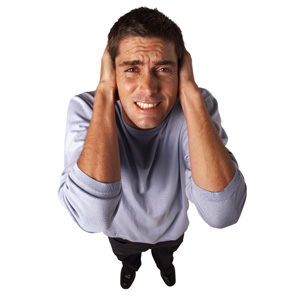While comfort and safety of operators may be achieved by ensuring that they use appropriate ear protection devices, good design and the right equipment selection can go a long way in reducing noise levels within a plant room and beyond, says Albert Haykal.
While comfort and safety of operators may be achieved by ensuring that they use appropriate ear protection devices, good design and the right equipment selection can go a long way in reducing noise levels within a plant room and beyond, says Albert Haykal.
The issue of sound or noise from large chiller plants or district cooling facilities is a vast and complex subject. Broadly speaking, it should essentially take into account three distinct “audiences” or areas – operators in the plant room, occupants elsewhere in the building and people in the surrounding area.
While suggestions, tests and measurements on sound levels from equipment manufacturers is the appropriate place to start the discussion on the topic, it is important to note that this may not be sufficient and needs to be augmented by a third-party acoustics specialist.
 Typically, large-scale district cooling plants will use water-cooled chillers, which are located inside a plant room. ARI Standard 575-1994 (Method of Measuring Machinery Sound within an Equipment Space) provides the relevant guidelines for the requisite measurement, evaluation and compilation of sound data for such installations. For external, air-cooled installations, reference to ARI 370 is applicable. However, it is important to note that due to varying mechanical room conditions, sound pressure measurements of chillers at the jobsite will vary from measurements taken in the laboratory or a test facility.
Typically, large-scale district cooling plants will use water-cooled chillers, which are located inside a plant room. ARI Standard 575-1994 (Method of Measuring Machinery Sound within an Equipment Space) provides the relevant guidelines for the requisite measurement, evaluation and compilation of sound data for such installations. For external, air-cooled installations, reference to ARI 370 is applicable. However, it is important to note that due to varying mechanical room conditions, sound pressure measurements of chillers at the jobsite will vary from measurements taken in the laboratory or a test facility.
The usual rating is an average “A” weighted sound (pressure) level at a metre’s distance from the equipment. “A” weighted sound pressure levels simulate what the human ear perceives. Occupational Safety and Health Administration (OSHA) uses this criterion as its measurement standard. But there are many other measures, values and factors that attempt to define sound – in fact, far too many to cover within the scope of this article.
While the comfort and safety of operators may be achieved by ensuring that they use appropriate ear protection devices, good design and careful equipment selection can make a considerable difference to sound levels within a plant room and beyond. Speed is the key. High rpm equipment will usually generate more noise. Pumps and chillers are the two key culprits. However, by selecting low-speed direct-drive centrifugal chillers (3,000 rpm) rather than high-speed gear-driven units (typically 8000 rpm) it is possible to dramatically reduce sound levels at source. A similar approach can be taken with the pumps.
Sound pressure levels for chillers vary with the head (saturated condensing temperature – evaporator suction temperature), tonnage, and the size of the areas radiating sound. The highest sound levels for a given centrifugal chiller is typically experienced at part-load conditions with a high entering condenser water temperature. This is because higher entering condenser water at part load increases the compressor pressure ratio, resulting in higher head and higher sound levels. Another good reason to install an effective chiller plant manager that will ensure the minimum number of chillers is operating each at close to full load.
Having taken steps to prevent excessive sound by selecting low-speed, low-noise equipment, a few other measures may also be considered:
Externally, cooling towers need to be added to the equation alongside chillers and pumps. Again, selecting low-speed fans and pumps and ensuring the most remote location will all work to provide occupants not only with great cooling but also some peace and quiet.
The writer is Centrifugal Chiller Leader, Trane Middle East and Africa, and is a recognised expert in centrifugal chillers and district cooling applications. He can be contacted at albert_haykal@trane.com
Copyright © 2006-2025 - CPI Industry. All rights reserved.